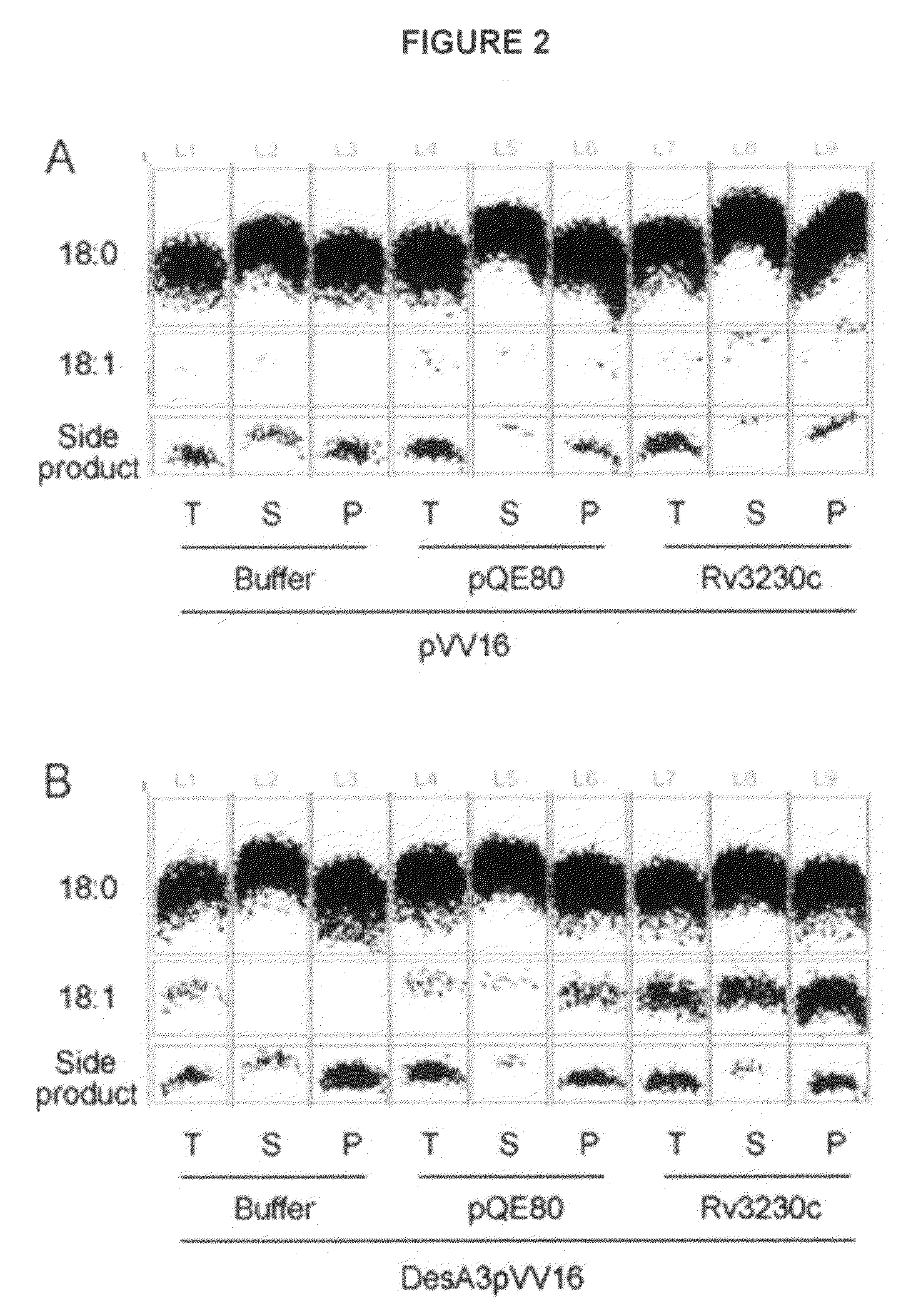Novel mycobacterium tuberculosis protein composition
- Summary
- Abstract
- Description
- Claims
- Application Information
AI Technical Summary
Benefits of technology
Problems solved by technology
Method used
Image
Examples
examples
[0077]It is to be understood that this invention is not limited to the particular methodology, protocols, patients, or reagents described, and as such may vary. It is also to be understood that the terminology used herein is for the purpose of describing particular embodiments only, and is not intended to limit the scope of the present invention, which is limited only by the claims. The following examples are offered to illustrate, but not to limit the claimed invention.
[0078]Materials
[0079]Total genomic DNA of Mycobacterium tuberculosis H37Rv was obtained from the TB Research Materials Facility at Colorado State University (Prof. J. Belisle, Director, NIH NIAD NO1AI75320). This material was used to clone rv3230c and rv3229c (encoding DesA3) by PCR methods.
[0080]Total RNA is obtained from mouse liver (SCD1), brain (SCD2), Harderian gland (SCD3), and heart (SCD4) using the TRIzol reagent (Invitrogen). AMV Reverse Transcriptase is from Promega (Madison, Wis.), and AccuPrime™ Pfx DNA p...
PUM
| Property | Measurement | Unit |
|---|---|---|
| Fraction | aaaaa | aaaaa |
| Fraction | aaaaa | aaaaa |
| Fraction | aaaaa | aaaaa |
Abstract
Description
Claims
Application Information
 Login to View More
Login to View More - R&D
- Intellectual Property
- Life Sciences
- Materials
- Tech Scout
- Unparalleled Data Quality
- Higher Quality Content
- 60% Fewer Hallucinations
Browse by: Latest US Patents, China's latest patents, Technical Efficacy Thesaurus, Application Domain, Technology Topic, Popular Technical Reports.
© 2025 PatSnap. All rights reserved.Legal|Privacy policy|Modern Slavery Act Transparency Statement|Sitemap|About US| Contact US: help@patsnap.com



